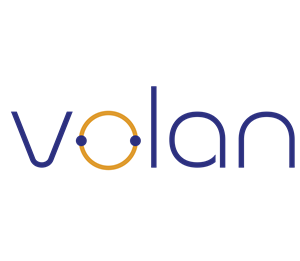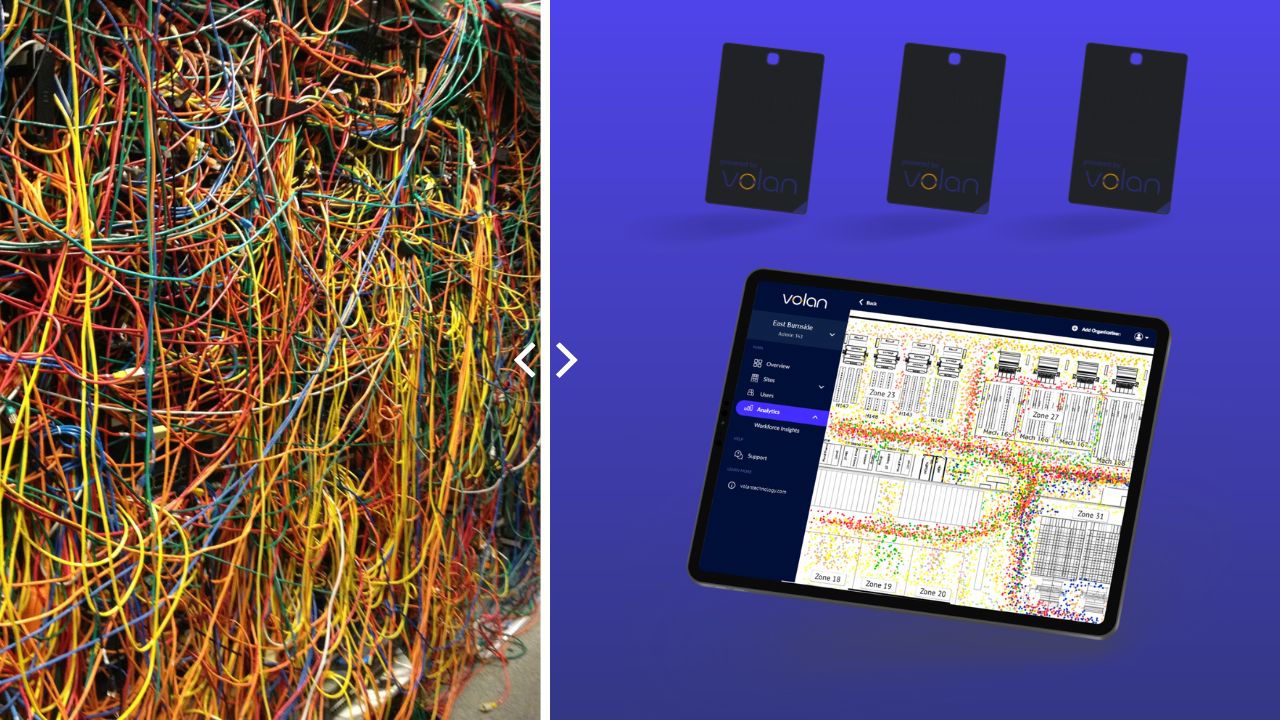Volan Technology Architecture Differentiators | Blog Post
The 4 Key Characteristics That Set Volan Apart From the RTLS Competition
Real-Time Locating Systems (RTLS) are increasingly commonplace in industrial applications, ranging from tool tracking for manufacturers to indoor mapping of warehouses. With industrial companies allocating as much as 70% of their operational expenses on labor, RTLS technologies seek new capabilities for labor analysis.
The choice of RTLS architecture will impact the ability to achieve the greatest ROI from labor analytics capabilities. Not all RTLS systems are built equal or designed for the same purpose; the Volan Positioning System (VPS) has unique attributes that make it specifically qualified for RTLS.
Want to learn more about RTLS? Read more on the blog post: What is RTLS?
1. A brand new type of RTLS
RTLS has a range of transformative abilities, but not all RTLS are built equally for each task. When it comes to gaining location intelligence on your workforce, it is critical to remember that software is a tool. In this case, it is software that’s designed to help your workforce achieve more output with less strain. But like any tool, if you use the wrong one, you will not get the desired results. You can have the fanciest screwdriver in the world, but it will never be very good at hammering in nails.
The Volan Positioning System (VPS) is the first and only technology architecture purpose-designed to analyze your most valuable asset: people. VPS is a patented real-time micro-location technology and machine learning data engine, the first solution designed for dynamic people positioning. Existing system architectures designed using Wi-Fi, Ultra-Wideband (UWB), and RFID have yet to reliably impact this major cost area. Legacy system architectures are often designed to only provide location capabilities in specific coverage areas, making them unsuited to labor analysis use cases.
The movement of people is inherent to productivity, determining where productive time is being spent and where people face operational inefficiencies. VPS is the first system architecture to shine a light on this blind spot by identifying operational inefficiencies and labor cost savings areas that have been invisible until now.
2. Fully independent
When evaluating new technologies, the excitement of new capabilities and advancements is often halted by the reality of implementation. While operators are eager to move forward with the promise of business improvements, IT is burdened with evaluating the technology. Often the narrative is as follows: a brand new system for a much-needed solution is evaluated, approved, and installed, only to find that it creates interference with other systems installed in the same space. Not only does this eliminate any benefit from the newly installed system, but it also disrupts existing processes.
VPS was designed with this architectural challenge in mind. The system architecture requires no dependency on existing network infrastructure. Built around Bluetooth Low Energy (BLE) technology, VPS quickly transmits data in the 2.4 GHz spectrum band. Data transmissions hop between 80 different 1 MHz wide channels to avoid interference with other 2.4 GHz technologies, including WiFi and ZigBee.
VPS also ensures data always flows with its unique self-healing mesh network design. If a sensor fails, another sensor in the network automatically picks up the signal to continue transmitting data. VPS goes another step further by operating independently of power. In the event of an emergency, VPS continues to transmit data in real-time to ensure your people at risk are quickly mustered to safety.
Volan eliminates interoperability issues with its end-to-end user experience. VPS collects data, and then the cloud analytics platform analyzes worker location data to reveal efficiencies or continually audit operational changes. The raw location data is also interoperable with existing reporting technologies for analysis while preserving its original context.
Additional reading: Ultra-Wideband vs. Bluetooth Low Energy
3. Install anywhere in minutes, not days
Traditional RTLS reliant on radio-frequency identification, infrared, and UWB require dedicated infrastructure. With RFID, it’s placing RFID readers throughout your site, manually adjusting antenna height and angle, calibrating for readability, then running Ethernet cables through your site for data transmission. UWB also requires extensive calibration with line-of-sight between devices, only to require a secondary technology like WiFi or Bluetooth to process analytics.
In contrast, VPS has a lightweight footprint and is quick to install – no wiring or drilling is required. Deploying is as easy as placing credit card-sized sensors throughout the space and powering them on. Immediately, data begins to flow with no additional wiring or network integrations required. The small sensors may be installed both indoors and outdoors in a variety of configurations to make for a fast and flexible installation. Install across an area as small or large as you need because scaling up or down is as simple as adding or removing sensors from your site.
With the technology installed on your site, traditional RTLS often requires days or weeks of calibration. Between a lengthy IT evaluation, installation, and waiting period for calibration, this amounts to several months between signing a service agreement and receiving your first trickle of usable location data. VPS installs in minutes and provides actionable data about your labor force on day one.
4. Designed for privacy
With the advent of location technologies, people are concerned about how location data is handled in a way that prevents businesses or hackers from abusing the technology. VPS informs how work processes can be made more efficient with concrete data, not estimations, all without compromising your employee’s trust.
VPS was designed with privacy at its core, protecting the privacy of individual workers more directly than manual optic time and motion studies. VPS does not utilize any cameras or facial recognition, nor does it require cell phone support – things employees often consider intrusive. VPS sensors are assigned anonymous IDs to protect employee privacy and protect from sniffing. The client has direct control over the unmasking of individual IDs as Volan Technology does not have access to client PII.
Individual VPS sensors do not advertise any personally identifiable information (PII) and do not store any data, thus eliminating the liability of loss or stolen sensors.
Clients determine the exact shape and size of the area for data collection. Once a sensor leaves the area, it automatically disconnects, much like how a smartphone Bluetooth connection halts upon exiting a car. This means sensors are never tracked outside of the pre-determined area, and employees can leave them at work at the end of the day.
The Volan analytics engine operates in a secure cloud configuration protected with AES-128 standard encryption. Unlike many other RTLS, Volan Technology cannot and will not sell client information.
If you are interested in seeing our solution in action, please contact us.




